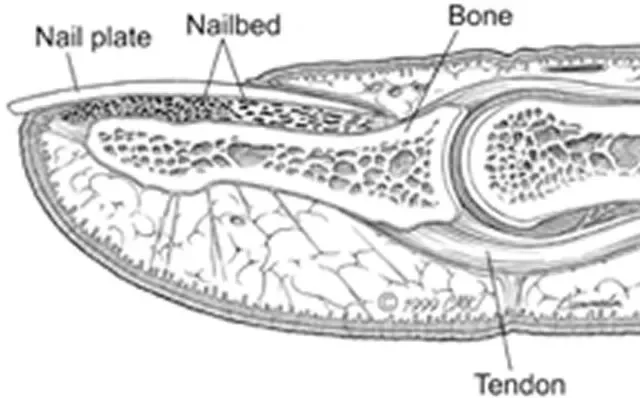
What are Fingertip and Nailbed Injuries?
Fingertip and nailbed injuries are among the most common hand injuries. They can result from numerous mechanisms including cutting injuries (with kitchen knives), crushing injuries (car doors, hammering, etc.) or by other accidents with saws or industrial machines. Several structures can be damaged at the tip of the finger. The nail, nailbed, pulp skin, bone and nerve endings are the structures that can be damaged with these types of injuries. When these injuries occur near the crease of the fingertip, the tendons can be damaged as well.
How is the Extent of a Fingertip or Nailbed Injury Diagnosed?
X-rays are helpful to determine if any fracture is present at the fingertip. UofL Physicians – Kleinert Kutz Hand Care will perform a careful hand examination to determine if there is any injury to the nerves, blood vessels, nail structures, bone and tendon.
What is the Treatment for a Fingertip or Nailbed Injury?
Different treatment options are available for fingertip and nailbed injuries. Treatment depends on the severity and the extent of involvement of the structures described previously. Simple nailbed (soft tissue underneath the nail) injuries producing small blood collections beneath the nail can be treated in a conservative manner using a splint to control pain and swelling. Intense pain can be the result of large blood collections beneath the nail, and in some cases must be removed by draining the blood. The nail can be torn or ripped in some injuries. If necessary, the repair of this structure is performed with very small stitches that dissolve after a short time. More severe injuries require surgical treatment that can include pins, if bones are broken. Complex lacerations may require soft tissue repair and skin grafts.
Injuries without fractures usually heal in a period of two to three weeks. If the fingertip is fractured, it will take between five and seven weeks for the bone to heal. Smoking is discouraged during the healing period as it can significantly affect the rate at which wounds heal.
After the soft tissues are healed, active motion is encouraged to regain the function and mobility of the injured finger. It is important to continue using the other fingers that are not injured so stiffness does not develop around the traumatized finger.
If surgery is needed, UofL Health – Kleinert Kutz Surgery Center may prescribe physical therapy. Therapy services are offered through UofL Health – Frazier Rehab Institute – Hand Therapy. Sensation after fingertip injuries can diminish due to the involvement of the nerve endings and hypersensitive skin can occur. This may be permanent depending on the severity of the injury.
For more information or to schedule an appointment please contact us at 502-561-4263 or 1-800-477-4263. To request an appointment online, use our Appointment Request Form.


